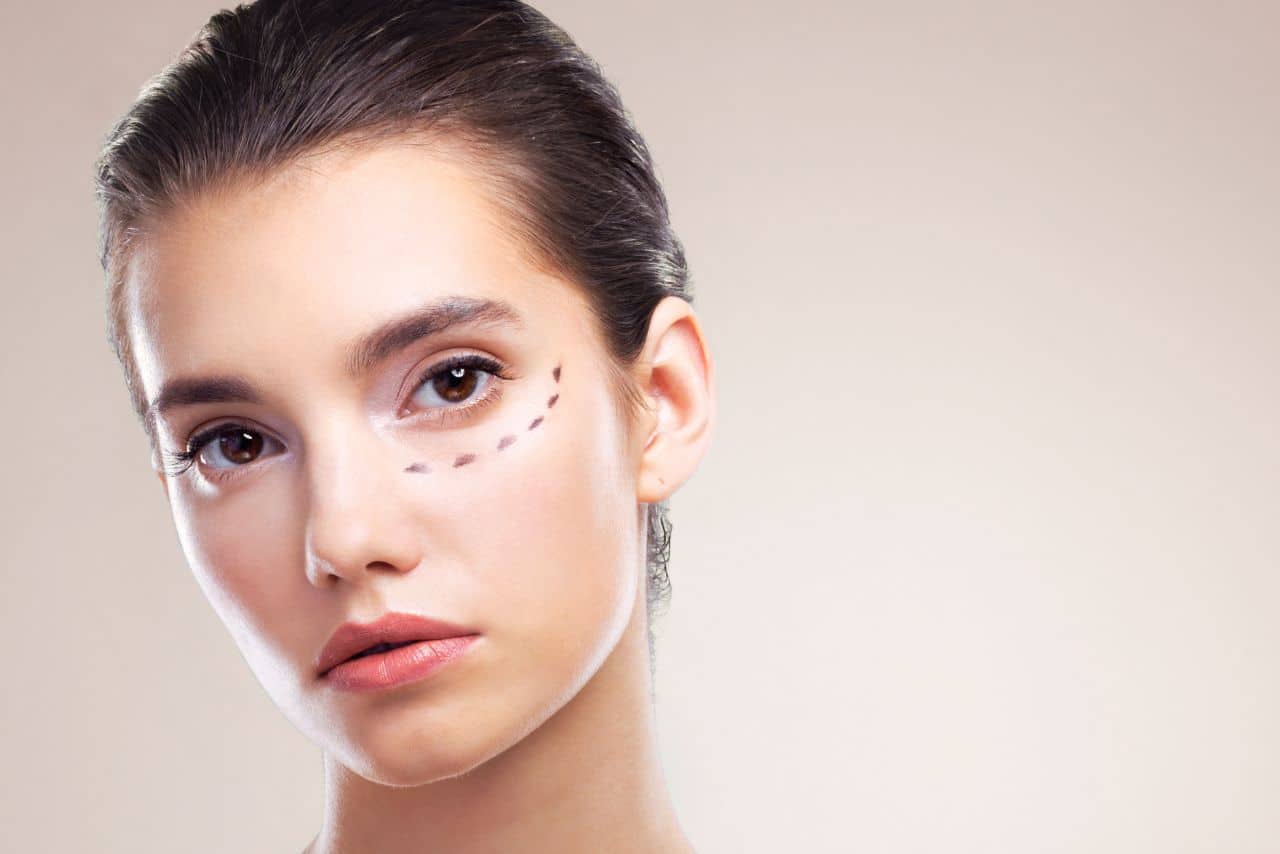
Even when well rested, many people present with dark undereye circles that lead them to seek out procedures for improving their appearance. Due to the demand for less costly, minimally invasive options, there are several non-surgical methods available for correcting the infraorbital area. Hyaluronic acid dermal fillers are frequently used for this purpose – they are injected into the lower eyelid area to fill the tear troughs and freshen up the face. This area can be difficult to treat as the skin is unforgiving and it is hard to hide overcorrection. The Palma Technique was developed to address this concern by reinforcing the skin and tissue under the infraorbital area.
A complex and high-risk area
There are several structures in the infraorbital area that make it more susceptible to aging, such as the fat pads, septa, muscles, and blood vessels. All of them contribute to looking healthy and well-rested but deteriorate with age. This can result in uneven skin tone and volume. Since it is so sensitive, it should only be treated by practitioners with years of experience and an understanding of facial anatomy.
The area is rich in arteries moving blood to the optic nerve, and there are risks of blindness caused by occlusion due to filler. The area is also prone to bruising due to loose connective tissue.
Using a cannula
Cannulas are being used more frequently as they are unlikely to cause bruising after injection. The blunt tip reduces the odds of piercing a blood vessel, allowing the filler to be safely and sub-dermally injected. A sharper tool such as a needle must be used to make the initial incision, but the cannula moves beneath the skin without causing damage.
Using a needle
Hyaluronic acid (HA) is hygroscopic and draws in water, adding volume wherever it is injected. When used superficially in the dermis, it can stimulate fibroblast activity, facilitating collagen production and strengthening the skin. A needle can inject HA directly into the dermis and strengthen it, unlike a cannula. This helps to minimize structural changes caused by aging before trying to increase volume.
Needles address the correction of volume and dermal strength simultaneously. It is easy to spot poor results, which are evident through overcorrected hollows or protruding filler that become visible due to the thinness of the skin. Poorly injected filler can also interfere with lymphatic flow and cause swelling.
The Palma Technique
Skin thickness and strength are assessed before treatment by squeezing the area between the fingers. The practitioner can also palpate the area, checking the depth of the hollows and assessing the amount of additional volume required.[vii]
The Palma Technique first focuses on improving dermal strength. This is done by injecting small volumes of filler into the mid-dermis, following the lower eyelid towards the thick skin of the cheek (the zygomatic cutaneous ligament). The correction of the lower eyelids is completed by filling in the assessed hollows, usually with the same needle. Aspirating the tissue can also be done to reduce the likelihood of injecting a blood vessel.
If the patient has excess skin or protruding fat pads, these cannot be fixed with fillers and no attempt should be made to overcompensate for them by over-increasing volume.
After the initial skin strengthening process, patients should wait for collagen production to occur before injecting more filler, as it will have less of an effect. Collagen increases over several months, after which the strengthening procedure can be done again. After two to three sessions, a follow-up examination is required to evaluate the results and address any changes for the next treatment. With undereye injections, less is more – sometimes, only 0.1 mL is required to complete the treatment. During the procedure, the appearance of the skin should be monitored, paying attention to how it folds and responds to pressure rather than the hollowness.
Results
Changes are visible almost immediately, making the undereye area appear fuller. Results are optimal after two weeks as bruising and swelling will go down after the treatment. The dermis will be stronger, which allows for a more aesthetically pleasing result as the filler is under thicker skin. If patients wish to maintain the production of this collagen, a second treatment is recommended to further strengthen the dermis.
Risks
The dermis is thick and injected filler does not spread very easily, whereas it spreads very well in the loose-connective tissue found in the sub-dermis. As such, superficial injections are better because the filler can be distributed with the hands throughout the skin. However, bruising is more likely because the skin might be structurally weak. Puncturing an artery is unlikely since injections are very shallow, but it is in the patient’s best interest to choose practitioners with years of experience. This will ensure that both skin strength and volume are corrected properly in the delicate infraorbital area.

Doris Dickson is an expert voice on cosmetic medical treatments and products, writing for Health Supplies Plus, a premier online resource for the medical community. Her concise, no-nonsense takes spotlight the tools and techniques shaping modern aesthetics.
